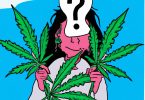We know that cannabidiol (CBD) benefits adults. Many parents now wonder about CBD for children. You may be surprised to learn that CBD owes its explosion in popularity largely to a child.
Her name is Charlotte Figi. At three months old, Charlotte suffered hour-long seizures. Seven medications did nothing for Charlotte. The seizures were so severe that by age 3, she was wheelchair-bound, unable to talk or eat. She was diagnosed with Dravet syndrome – a rare, catastrophic, treatment-resistant epilepsy.
When weekly seizures exceeded 300, Charlotte’s parents induced a medical coma. She was a danger to herself. But her grandfather decided to try CBD extract as a final, desperate resort. The seizures went from 300 to ZERO in the first week.
Fast-forward to the year 2018: the FDA approved CBD as a medication for treatment-resistant epilepsy. CBD has since faced rigorous inspection in scientific/medical circles. But what do we know about CBD’s effects on children?
CBD is safe. A 2018 report from the World Health Organization describes CBD as “well tolerated with a good safety profile.” The only significant side effects appear to be a result of medication interactions. Minor potential side effects of long-term CBD use in children have been reported as diarrhea and sleepiness; uncommonly, children using CBD for treatment-resistant epilepsy experienced vomiting, pneumonia, and abnormal liver enzymes [1].
In terms of pharmacology (how CBD acts in the body), children are not simply ‘small adults.’ CBD has a greater volume of distribution in children, which means it spreads to more tissue. Other metrics are lower for children. These include absorption, excretion, metabolism, and the degree of plasma protein binding (less CBD binding to protein means more efficient distribution) [2]. The takeaway is that higher CBD doses may be required for children, but it distributes more completely and lasts longer in the body.
What about medical conditions? Other than epilepsy, CBD is a candidate for several conditions in children, foremost of which are autism (ASD) and attention-deficit hyperactive disorder (ADHD).
A 2018 preliminary study published in Neurology found significant improvement of behavioral outbreaks among children with ASD; as a result of these findings, researchers started a double-blind, placebo-controlled, crossover trial [3]. The Center for Medicinal Cannabis Research at UC San Diego is also planning a controlled trial to test CBD on autism symptoms. Limited options for autism, and anecdotal reports of behavioral improvement, have inspired some parents of ASD children to turn to CBD – even when threatened by Child Protective Services.
Some young adults with ADHD self-medicate with cannabinoids, and they may provide symptom relief (4). However, Children and Adults with Attention-Deficit/Hyperactivity Disorder (CHADD) cautions that research is too sparse to recommend CBD as a treatment for ADHD.
Research or not, CBD has an excellent safety profile. Parents with few alternatives are increasingly giving it a try.
- Laux, L. C., et al. (2019). Long-term Safety and Efficacy of Cannabidiol in Children and Adults with Treatment-Resistant Lennox-Gastaut Syndrome or Dravet Syndrome: Expanded Access Program Results. Epilepsy Research. doi:10.1016/j.eplepsyres.2019.03.015
- Millar, S. A., et al. (2018). A Systematic Review on the Pharmacokinetics of Cannabidiol in Humans. Frontiers in Pharmacology,9. doi:10.3389/fphar.2018.01365
- Aran, Adi, et al. (2018). Cannabidiol Based Medical Cannabis in Children with Autism- a Retrospective Feasibility Study (P3.318); 90(15 Supplement).
- Cooper, R. E., et al. (2017). Cannabinoids in Attention-Deficit/Hyperactivity Disorder: A Randomised-Controlled Trial. European Neuropsychopharmacology,27(8), 795-808. doi:10.1016/j.euroneuro.2017.05.005










